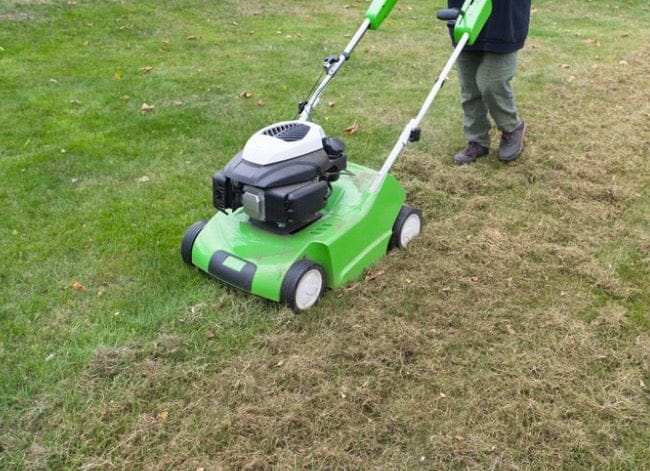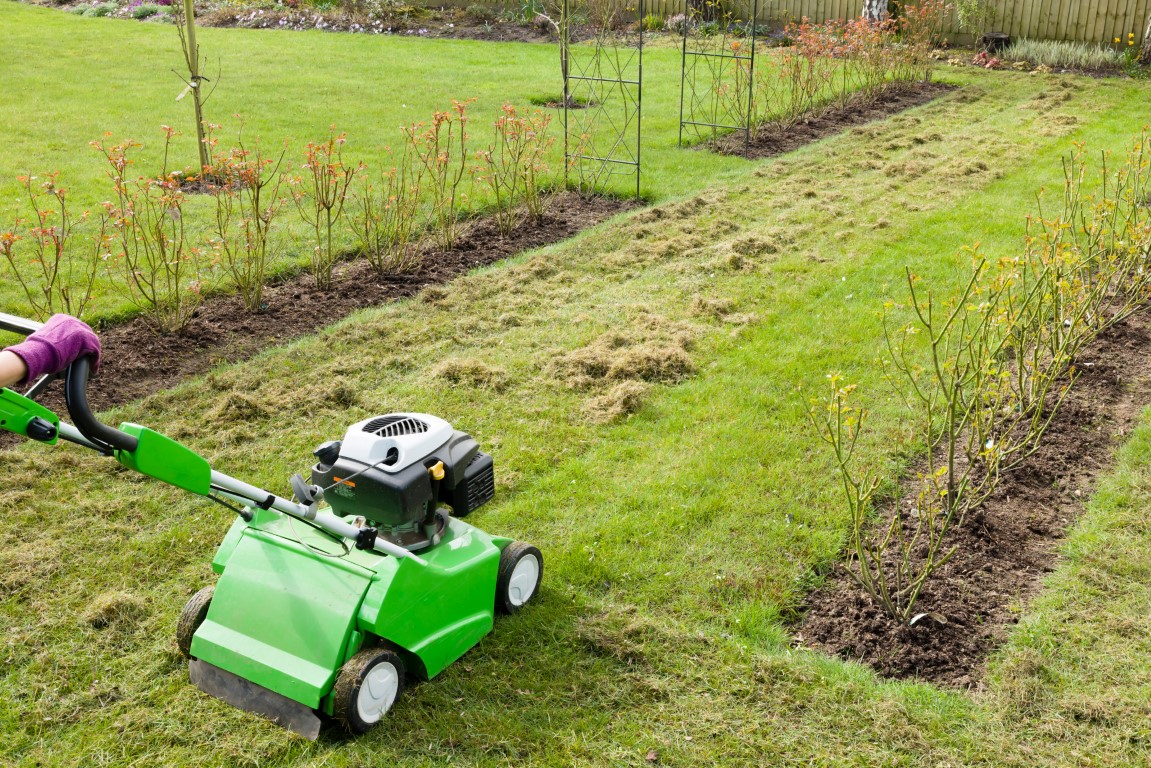Lawn Dethatching
Even healthy lawns build up thatch over time. Thatch is the layer of accumulated dead and living grass shoots, crowns, stems, and roots between the soil and green grass. The right amount of thatch can help to maintain steady soil moisture and temperature.
It is a misconception that grass clippings cause thatch.
While a thin 1/2″ or less layer of thatch is good for your lawn, if it is any thicker, it can be problematic for your lawn when water struggles to penetrate the thick thatch layer, causing water to run off the grass instead of being absorbed.
Thatch can also harbor insects and lawn diseases as well as prevent roots from reaching much needed air and nutrients.
At times, grass can begin growing in the thatch layer instead of the soil which produces a shallow system that could be damaged in extreme temperatures.
When is Detatching Needed?
- Water is running off the lawn instead of soaking in
- You have noticed grayish-brown matts
- You have compacted soil
- You have overwatered or overfertilized
A tell-tale sign that you have excess thatch is if you cut a small wedge of lawn about 2″ deep and if the thatch layer is over 1/2″, it’s time to thatch.


The ultimate goal of lawn maintenance is to allow plant debris to decompose at the same rate as the grass grows. The rule of thumb is to remove no more than one-third of the grass blade in a single mowing.
When to Dethatch Your Lawn
Dethatching is typically done when it has time to recover in spring or fall. If done mid-summer, dethatching can cause stress to your lawn since it would remove the barrier that protects roots from drying out during hot conditions. Since thatch builds up over time, it is typically done every 3-5 years or as needed. An ideal schedule is aeration every other year and dethatching during an alternate year when you are not aerating.
Due to the labor and equipment required, dethatching and aeration can be a daunting task – call Green Envy to do the heavy lifting at 262-617-4048 or request a quote online!

